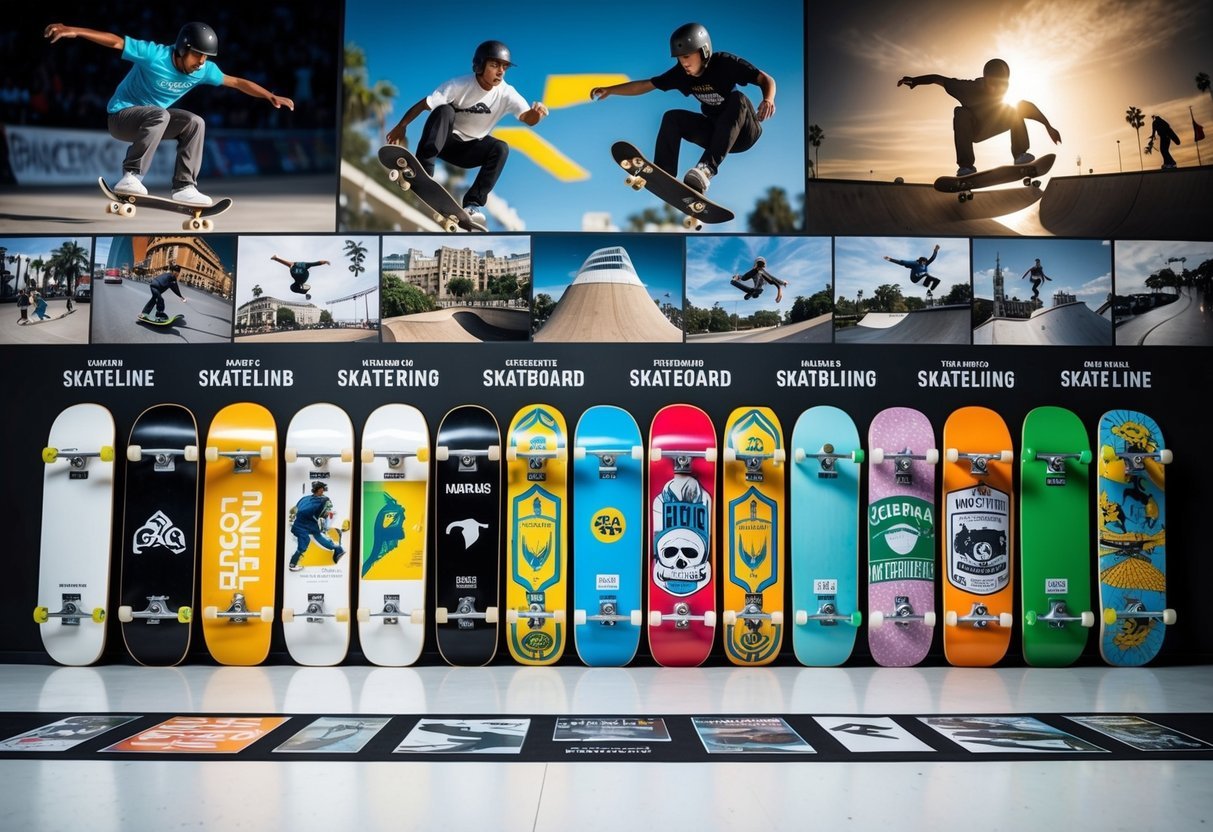Skateboarding has come a long way since its humble beginnings.
From makeshift boards cobbled together by surfers to the sleek, high-tech designs of today, the sport has undergone a remarkable transformation.
It’s not just about the equipment, though – skateboarding culture and techniques have evolved dramatically too.
You might be surprised to learn how skateboarding has shaped urban landscapes, influenced fashion, and even made its way into the Olympics. Whether you’re a seasoned skater or just curious about the sport’s history, understanding these key milestones can give you a whole new appreciation for skateboarding.
Let’s dive into seven fascinating facts that highlight the evolution of this thrilling extreme sport.
1) Originated in the 1950s
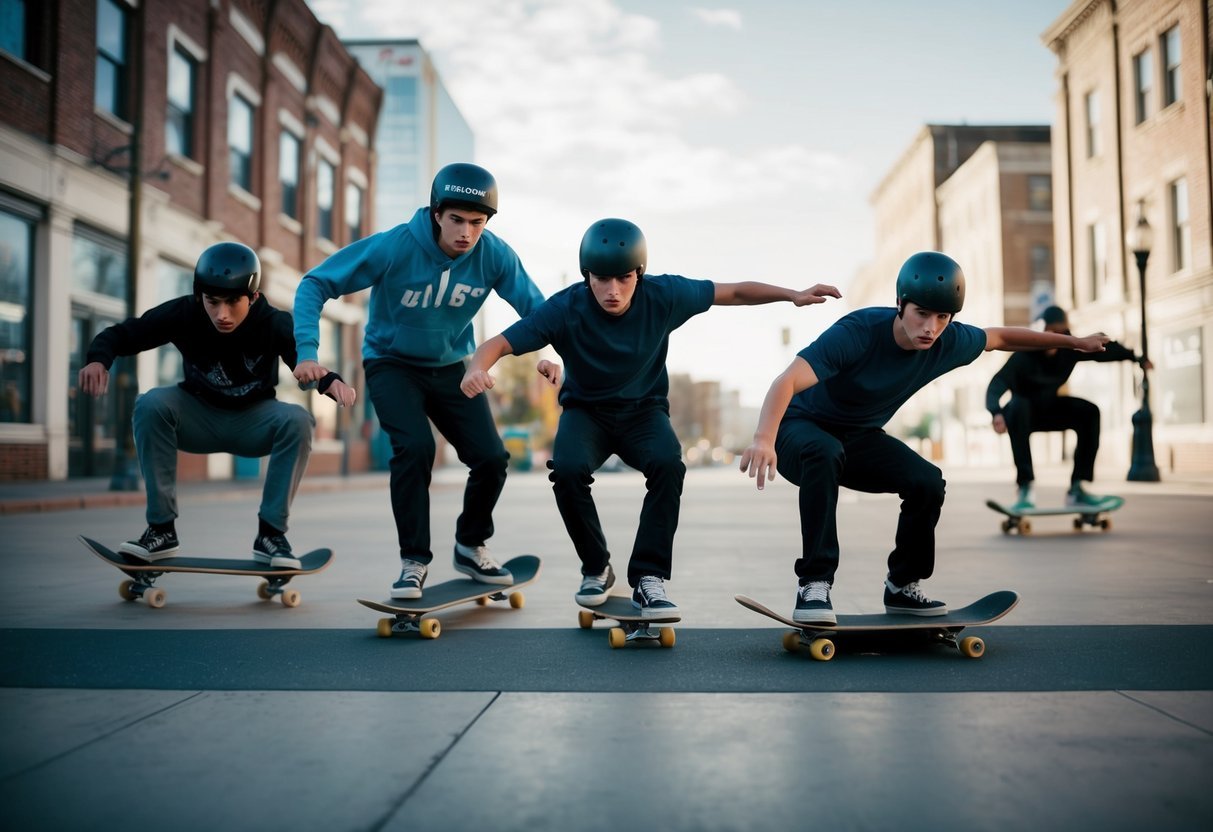
You might be surprised to learn that skateboarding has been around since the 1950s.
It all started in sunny California when surfers wanted to bring their wave-riding skills to the streets.
Back then, skateboards were pretty basic.
They were just wooden boards with roller skate wheels attached.
Not exactly the high-tech decks you see today!
People called it “sidewalk surfing” back in those days.
You can imagine groups of kids cruising down the sidewalks, pretending they were catching waves on concrete.
The exact origin of the first skateboard is a bit of a mystery.
It seems like multiple people had the idea around the same time.
That’s just how cool ideas work sometimes!
By the late 1950s, skateboarding was starting to catch on.
More and more kids were giving it a try.
Little did they know, they were at the beginning of what would become a massive cultural phenomenon.
2) Invention of the Ollie by Alan Gelfand
Ever wondered how skateboarders get airborne without grabbing their boards? It’s all thanks to Alan Gelfand and his groundbreaking invention: the ollie.
Back in 1978, Gelfand, nicknamed “Ollie,” revolutionized skateboarding in Fort Lauderdale, Florida.
He figured out how to make the board leap into the air using just his feet.
The trick seemed like magic at first.
You’d see Gelfand pop the tail of his board, slide his front foot forward, and suddenly he’d be floating above the ground, board and all.
This move changed everything.
Suddenly, you could take your tricks to new heights – literally.
The ollie became the foundation for countless other aerial tricks.
It wasn’t long before skaters everywhere were trying to master the ollie.
You’d see kids practicing in driveways and parking lots, determined to crack the code.
Today, the ollie is a fundamental skill in skateboarding.
Whether you’re a beginner or a pro, mastering this trick is essential.
It’s your ticket to taking your skating to the next level.
3) Introduction of the kicktail by Larry Stevenson
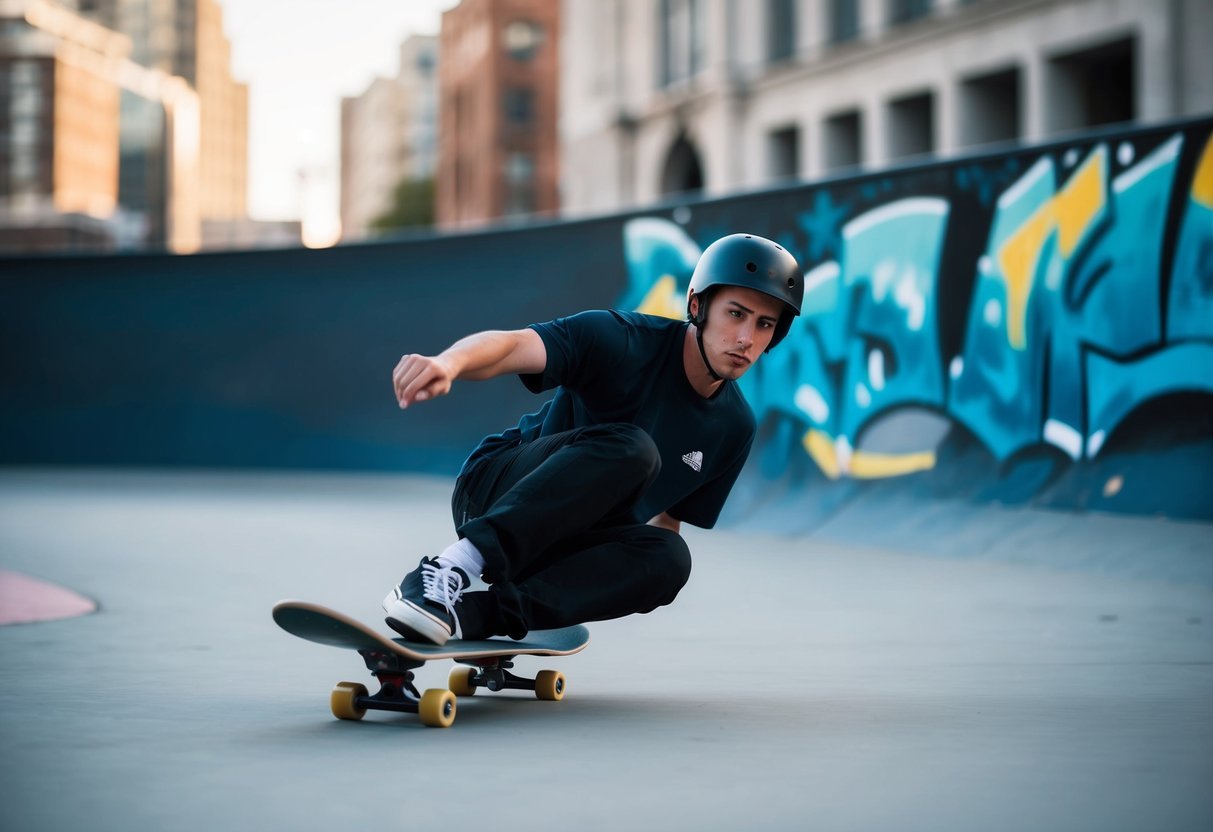
Ever wonder why your skateboard has that cool bend at the end? You can thank Larry Stevenson for that game-changing feature.
Back in 1969, this innovative skater patented the kicktail, revolutionizing skateboarding as we know it.
The kicktail is that upward curve at the end of your board.
It’s not just for show – it gives you way more control over your ride.
With this nifty addition, you can pop ollies, perform tricks, and maneuver like never before.
Stevenson didn’t stop there.
He even patented the idea of kicktails at both ends of the board.
That’s right, the nose and tail design you see on most modern skateboards today? That’s all thanks to Larry’s forward-thinking vision.
While Stevenson’s company, Makaha, was a pioneer in skateboard design, they weren’t the only ones to benefit from his invention.
The kicktail shape quickly became a standard feature across the industry, opening up a whole new world of possibilities for skaters everywhere.
Thanks to Larry Stevenson’s kicktail, skateboarding evolved from a simple cruising activity to the dynamic, trick-filled sport you know and love today.
Next time you land a sick trick, give a little nod to Larry for making it possible!
4) Bones Brigade dominated the 1980s
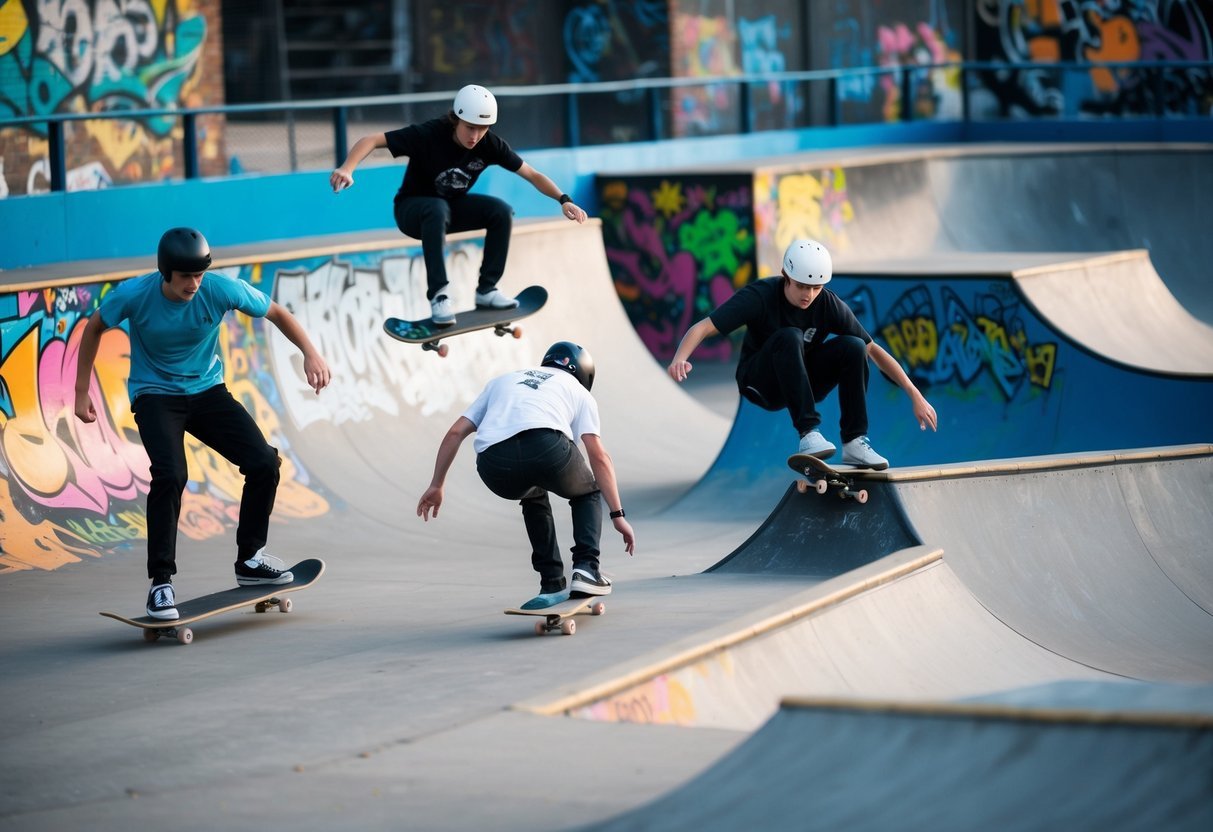
The Bones Brigade skateboarding team took the 1980s by storm.
Created by Stacy Peralta and George Powell in 1979, this crew of talented skaters revolutionized the sport.
You might recognize some of the legendary names like Tony Hawk, Steve Caballero, and Rodney Mullen.
These guys weren’t just skaters; they were innovators who pushed the boundaries of what was possible on a board.
The Bones Brigade didn’t just dominate competitions.
They transformed skateboarding into a global movement, influencing art, music, and youth culture.
Their impact went beyond the skate park.
The team starred in groundbreaking skateboarding videos that reached kids worldwide.
Classics like “The Bones Brigade Video Show” and “The Search for Animal Chin” inspired a whole generation of skaters.
You could say the Bones Brigade wasn’t just a team; it was a cultural phenomenon.
Their influence on skateboarding during the 1980s can still be felt today.
5) Tony Hawk’s 900 at the X Games 1999
You might remember June 27, 1999, as the day skateboarding changed forever.
Tony Hawk, already a legend in the sport, was about to take it to a whole new level at X Games V.
Picture this: Tony’s on the vert ramp, attempting a trick no one had ever landed before – the 900.
That’s two and a half full rotations in mid-air.
Crazy, right?
After nine attempts, things weren’t looking great.
The competition was over, but Tony wasn’t done.
He kept trying, pushing himself to the limit.
The crowd was going wild, cheering him on with each attempt.
Then, on his tenth try, Tony nailed it.
The 900 was no longer just a dream.
It was real, and you were witnessing history.
The moment was electric.
Fans rushed the ramp, lifting Tony onto their shoulders.
It wasn’t just a win for him – it was a win for skateboarding as a whole.
This trick opened up new possibilities for what you could do on a board.
It pushed the boundaries of what was thought possible in the sport.
6) Skateboarding in the Olympics 2020

Skateboarding made its Olympic debut at Tokyo 2020, and it was a game-changer.
You might’ve caught the action as skaters from around the world showed off their skills on the biggest stage.
The Games featured two disciplines: street and park.
In street, skaters tackled a course with stairs, handrails, and benches, mimicking urban skateboarding environments.
Park skating took place in a bowl-shaped course, letting athletes pull off sick aerial tricks and grinds.
The format gave skaters freedom to choose their own lines and showcase their creativity.
You couldn’t miss the youthful energy of the competitors.
Some of the medalists were barely into their teens, like 13-year-old Momiji Nishiya who snagged gold for Japan in the women’s street event.
The Olympic debut brought skateboarding to a wider audience.
It highlighted the sport’s community spirit, with competitors cheering each other on and celebrating together regardless of the results.
Skateboarding’s inclusion in the Olympics has given the sport a boost, inspiring new generations to grab a board and hit the streets or parks.
You can expect to see even more progression when it returns for Paris 2024.
7) Influence of Dogtown and Z-Boys
You might not know it, but a group of rebellious teens from California changed skateboarding forever.
The Z-Boys were a team of skateboarders from the Dogtown area of Santa Monica and Venice in the 1970s.
These guys brought a whole new attitude to skating.
They took their aggressive surf style and applied it to the streets and empty pools.
The Z-Boys invented vertical skateboarding.
They’d sneak into backyards and skate in drained swimming pools, pushing the limits of what was possible on a board.
Their influence spread fast.
Skateboarding magazines featured the Z-Boys, showcasing their radical new style.
Soon, skaters all over were trying to copy their moves.
The Z-Boys’ impact went beyond just tricks.
They created a rebellious, punk-inspired skate culture that’s still alive today.
You can thank the Z-Boys for modern skateparks too.
Their pool skating led to the development of vert ramps and half-pipes.
Even now, decades later, you can see the Z-Boys’ influence in skateboarding’s attitude, style, and tricks.
They truly revolutionized the sport.
Early Days of Skateboarding
Skateboarding’s roots trace back to 1950s California, where surfers sought thrills on land.
The sport quickly gained popularity, leading to its first major boom in the 1960s.
Let’s explore how it all began.
The Origins of the Skateboard
Skateboarding emerged as an offshoot of surfing culture in California during the late 1950s.
Surfers wanted to “surf the streets” when waves were low.
They created the first skateboards using wooden planks and roller skate wheels.
These early boards were pretty basic.
You’d struggle to do tricks on them today! But they laid the groundwork for the sport’s future.
As word spread, more people started making their own boards.
Kids would often cobble together makeshift skateboards using whatever materials they could find.
First Skateboarding Boom
The 1960s saw skateboarding’s first major surge in popularity.
Manufacturers started mass-producing skateboards to meet growing demand.
If you were around then, you might’ve seen the iconic clay wheels.
They were a big improvement over metal wheels, offering better grip and smoother rides.
Skateboard competitions began popping up.
The first official contest was held in 1963 in Hermosa Beach, California.
It featured freestyle and slalom events.
Skateboarding even hit the silver screen.
A 1964 film called “Skater Dater” showcased the emerging culture.
It won awards and helped introduce skateboarding to a wider audience.
By 1965, you could find skateboarding magazines on newsstands.
The sport was no longer just a California fad – it was going national!
Skateboarding’s Cultural Impact

Skateboarding has left an indelible mark on pop culture, fashion, and music.
Its influence extends far beyond the skate park, shaping trends and attitudes across society.
The Rise of Skateboarding in Pop Culture
You’ve probably noticed skateboarding’s growing presence in movies, TV shows, and video games.
Films like “Lords of Dogtown” and the Tony Hawk’s Pro Skater game series have brought skateboarding to mainstream audiences.
Skaters have become iconic figures, with pros like Tony Hawk and Rodney Mullen achieving celebrity status.
Their tricks and personalities have inspired countless fans.
Social media has amplified skateboarding’s reach.
Instagram and YouTube are now packed with skate videos, helping tricks and styles spread globally.
Influence on Fashion and Music
Your wardrobe might already show signs of skate culture’s impact.
Brands like Vans and Thrasher have become fashion staples, even for non-skaters.
Baggy jeans, graphic tees, and skate shoes are now common streetwear items.
You’ll spot these looks far beyond the skate park.
Music and skateboarding have a tight bond.
Punk, hip-hop, and indie rock often provide the soundtrack to skate videos.
Many musicians, like Bam Margera and Lupe Fiasco, have roots in skating.
Skate-inspired music festivals like Back to the Beach celebrate this connection.
You’ll find a unique blend of tunes and tricks at these events.
Frequently Asked Questions
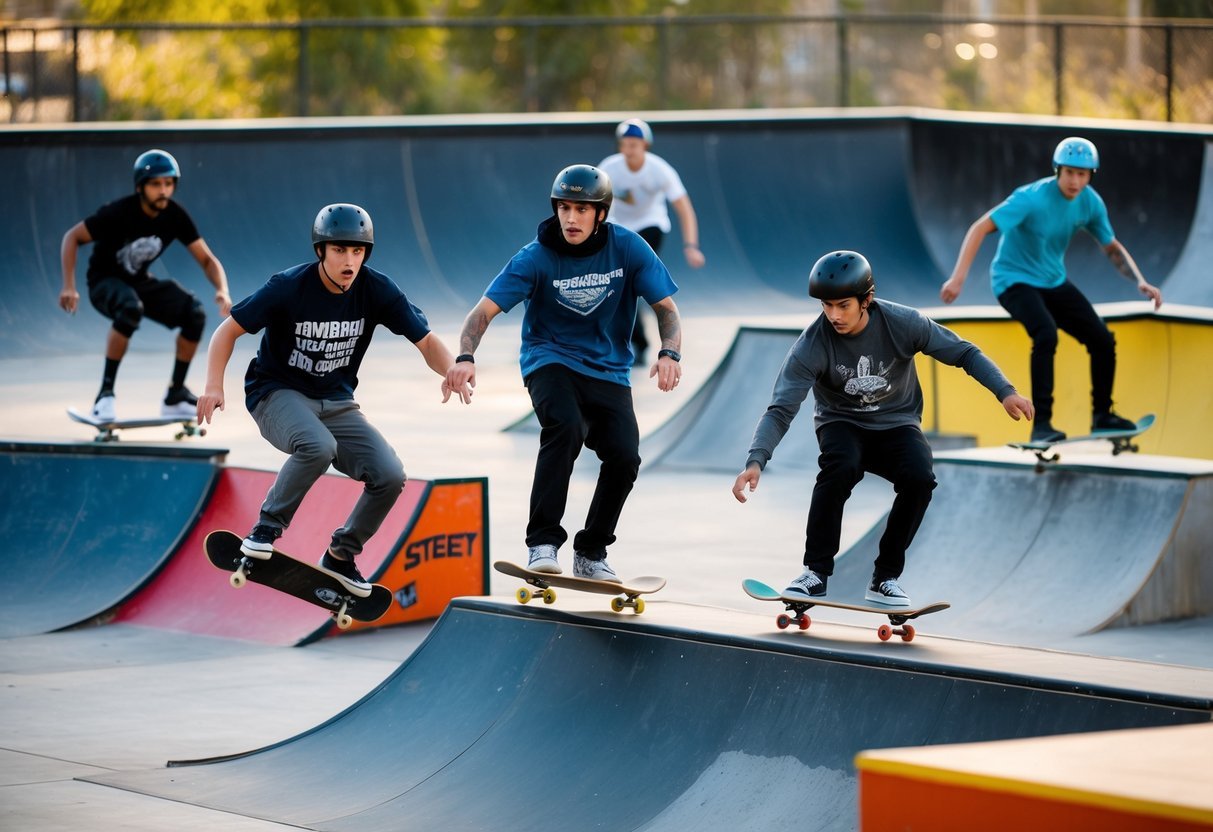
Skateboarding has come a long way since its humble beginnings.
Let’s dive into some key questions about its evolution, from street surfing to Olympic sport.
How did skateboarding originally get started?
Skateboarding kicked off in the 1950s when California surfers wanted something to do when the waves were flat.
They attached roller skate wheels to wooden boards, creating the first skateboards.
These early boards were pretty basic, but they laid the foundation for the sport we know today.
What are some major milestones in the history of skateboarding?
The invention of the Ollie by Alan Gelfand in 1978 revolutionized skateboarding.
This trick allowed skaters to get airborne without using their hands.
Larry Stevenson introduced the kicktail in the 1960s, giving skaters more control and opening up new possibilities for tricks.
The Bones Brigade team dominated the 1980s, pushing skateboarding to new heights and popularizing it worldwide.
In 1999, Tony Hawk landed the first 900 at the X Games, a moment that captured global attention.
How has skateboarding culture influenced broader society?
Skateboarding has had a massive impact on fashion, music, and art.
You’ve probably seen skate-inspired clothing and graphics in mainstream fashion.
The sport has also influenced urban design, with cities now incorporating skate-friendly features into public spaces.
Skateboarding’s DIY ethos has inspired a generation of creators and entrepreneurs.
What are some significant changes that skateboards have undergone?
Early skateboards were basically planks with wheels.
Now, you’ve got high-tech decks made from multiple layers of wood and sometimes carbon fiber.
Wheels have evolved from metal to polyurethane, providing better grip and smoother rides.
Truck designs have improved, allowing for better turning and stability.
When did skateboarding become a part of the Olympic Games?
Skateboarding made its Olympic debut at the Tokyo 2020 Games (held in 2021 due to the pandemic).
This inclusion marked a huge milestone in the sport’s journey from counterculture to mainstream acceptance.
What impact have famous skateboarders had on the evolution of the sport?
Pro skaters like Tony Hawk, Rodney Mullen, and Nyjah Huston have pushed the boundaries of what’s possible on a board.
These athletes have also helped bring skateboarding into the mainstream, attracting sponsors and media attention.
Their influence extends beyond tricks.
Many pros have launched successful skateboard companies, further shaping the industry.


